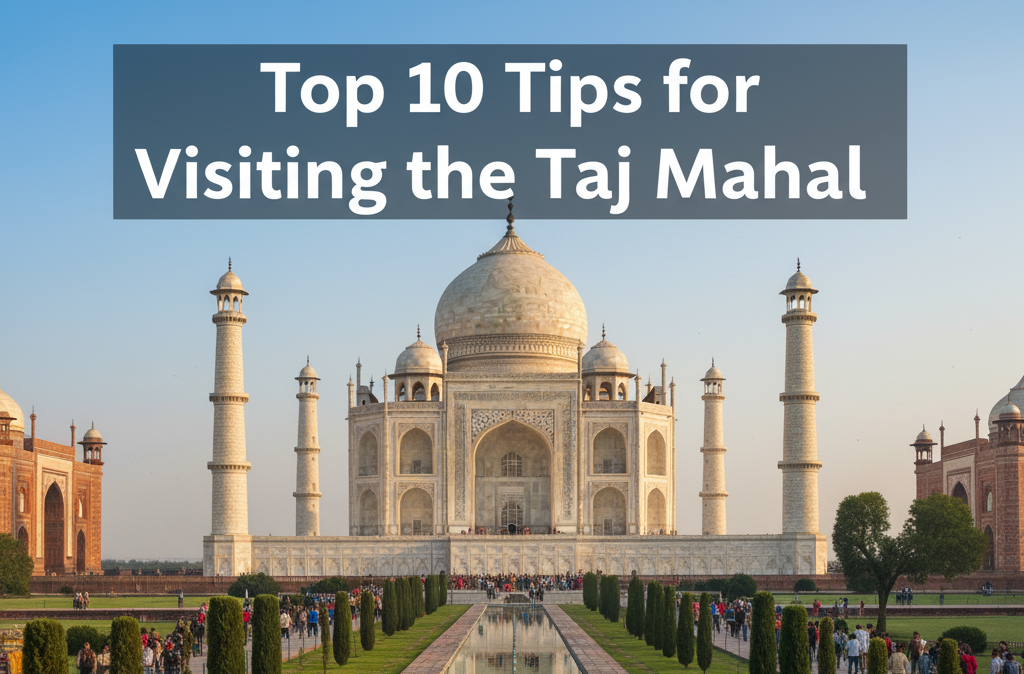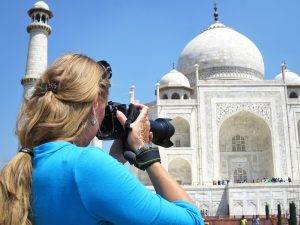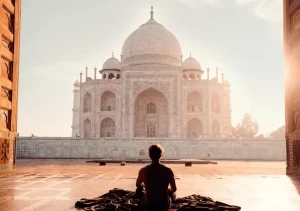The Taj Mahal—an enduring symbol of love and one of the New Seven Wonders of the World—sits gracefully on the banks of the Yamuna River in Agra, India. Every year, millions of travelers from across the globe are drawn to its ivory-white beauty, intricate carvings, and romantic history. However, to truly appreciate this marvel, it’s important to plan your Taj Mahal tour carefully. From choosing the right time to visit to booking the perfect Agra Taj Mahal tour package, a bit of preparation can make all the difference between an average trip and an unforgettable journey.
Whether you’re traveling solo, as a couple, or with family, this comprehensive guide will walk you through the top 10 essential tips every tourist must know before stepping foot into this architectural wonder. Get ready to dive deep into expert advice, travel hacks, and insider insights that will ensure your Agra tour package is smooth, memorable, and full of magical moments.
1. Choose the Right Time to Visit
Timing is everything when it comes to visiting the Taj Mahal. Agra’s climate can swing dramatically—from chilly winters to scorching summers—so knowing when to plan your Taj Mahal tour is essential. The best months to visit are October through March, when the weather is pleasant, the skies are clear, and the marble monument gleams brilliantly under the morning sun. If you book your Agra Taj Mahal tour package during this period, you’ll be rewarded with stunning views and comfortable sightseeing.
Avoid visiting in May and June, when temperatures often soar above 40°C (104°F), making outdoor exploration challenging. Similarly, July to September brings heavy monsoon rains, which can limit visibility and accessibility.
For the best experience, plan your visit at sunrise or sunset. The Taj Mahal’s marble façade changes color depending on the time of day—blushing pink at dawn, glowing white at midday, and turning golden under the moonlight. Sunrise visits are particularly magical, offering soft light and fewer crowds. Most Taj Mahal tour packages include early morning schedules to help visitors witness this breathtaking spectacle.
2. Book Your Agra Tour Package in Advance
Booking your Agra tour package in advance isn’t just about convenience—it’s about crafting a seamless travel experience. The Taj Mahal is one of India’s most visited landmarks, and tickets, guides, and accommodations can fill up quickly, especially during peak tourist season.
A good Agra Taj Mahal tour package will include hotel stays, guided tours, entry tickets, and transport. Some also combine other must-see attractions like the Agra Fort and Fatehpur Sikri. By reserving early, you can compare prices, customize your itinerary, and often get discounts or added perks.
3. Understand Entry Fees and Rules
Before you embark on your Taj Mahal tour, familiarize yourself with entry fees and visiting rules to avoid last-minute surprises. Ticket prices vary for Indian citizens, SAARC residents, and international tourists. As of recent updates, foreign visitors pay around ₹1100–₹1300, while Indian citizens pay about ₹250. Children under 15 can enter free of charge.
Most Taj Mahal tour packages include these entry fees, so you don’t need to worry about cash transactions on site. However, it’s still useful to know the regulations. For instance, visitors are not allowed to bring food, tripods, drones, or smoking materials inside the complex. Bags are screened, and metal detectors are used at entry points, so pack light to move through security quickly.
Photography is permitted but with some restrictions. Inside the main mausoleum, cameras and mobile photography are not allowed. Outside, however, you can capture as many photos as you like—especially from Mehtab Bagh across the Yamuna, which offers a postcard-perfect view of the monument.
If you book a Taj Mahal tour package, your guide will typically brief you on all rules and help you navigate the entry process with ease.
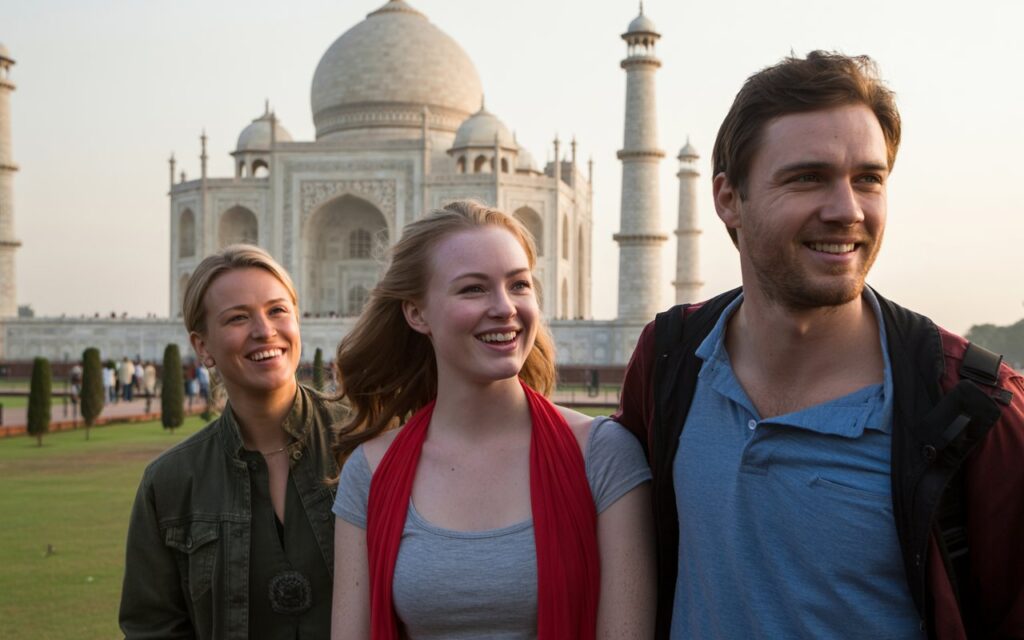
4. Dress Comfortably and Respectfully
The Taj Mahal isn’t just a tourist spot—it’s a UNESCO World Heritage Site and a place of immense cultural and spiritual significance. Dressing appropriately shows respect for the monument and the local culture. Light, breathable fabrics like cotton or linen are perfect for Agra’s warm climate. Avoid sleeveless tops or overly revealing clothing, especially if you plan to visit nearby religious sites after your Taj Mahal tour.
Comfortable footwear is essential, as you’ll be walking long distances within the complex. However, note that shoes must be removed or covered before stepping onto the marble platform. Many Agra tour packages include disposable shoe covers for convenience.
For sun protection, carry a wide-brimmed hat, sunglasses, and sunscreen. Agra’s sun can be intense even in winter months. If your Agra Taj Mahal tour package includes sunrise or sunset visits, a light jacket might also be handy for the early morning chill.
Dressing right ensures you’re both respectful and comfortable, allowing you to fully immerse yourself in the majesty of your Taj Mahal tour experience.
5. Arrive Early to Catch the Sunrise View
If there’s one experience that defines a Taj Mahal tour, it’s watching the sunrise over the marble masterpiece. The gates open about 30 minutes before sunrise, and the sight of the first light hitting the white marble is simply breathtaking. The serene morning air, fewer tourists, and the golden-pink hue of the Taj make it feel like a private viewing.
For those who’ve booked Agra tour packages, tour operators usually schedule an early pick-up to ensure you don’t miss this once-in-a-lifetime moment. Arriving early also means shorter queues at the ticket counter and security check.
Bring a high-quality camera or smartphone—sunrise offers the best lighting conditions for photography. If you’re on a guided Taj Mahal tour, your guide can suggest the best vantage points—like the reflecting pool or the southern gate—for Instagram-worthy shots.
Even if waking up early isn’t your thing, trust us—it’s worth it. The peaceful beauty of the Taj Mahal at dawn captures the very essence of what makes it one of the most romantic places on Earth.
Hire a Knowledgeable Guide
Hiring a knowledgeable and licensed guide for your Taj Mahal tour can transform a simple sightseeing trip into an enriching cultural experience. While the beauty of the monument speaks for itself, understanding the stories behind its creation adds a deeper emotional connection. A professional guide will share fascinating tales about Emperor Shah Jahan’s undying love for Mumtaz Mahal, the intricate architectural techniques used, and the symbolism behind every detail of the monument.
Many Agra Taj Mahal tour packages include certified guides who speak multiple languages, ensuring you don’t miss any important details. These guides are trained and authorized by the Ministry of Tourism, making them reliable sources of accurate historical information. Hiring a random guide near the gate can lead to scams or misleading information, so always confirm credentials or book through your Agra tour package provider.
A good guide also knows the best times and spots for photography, where to stand for crowd-free pictures, and even shortcuts within the complex to save time. They can also assist in explaining local customs and help you interact with local vendors respectfully.
When booking your Taj Mahal tour package, look for options that highlight “licensed local guide included.” This ensures authenticity and adds incredible value to your trip. Remember, a guide’s storytelling can make the history of the Taj Mahal come alive in ways no brochure ever could.
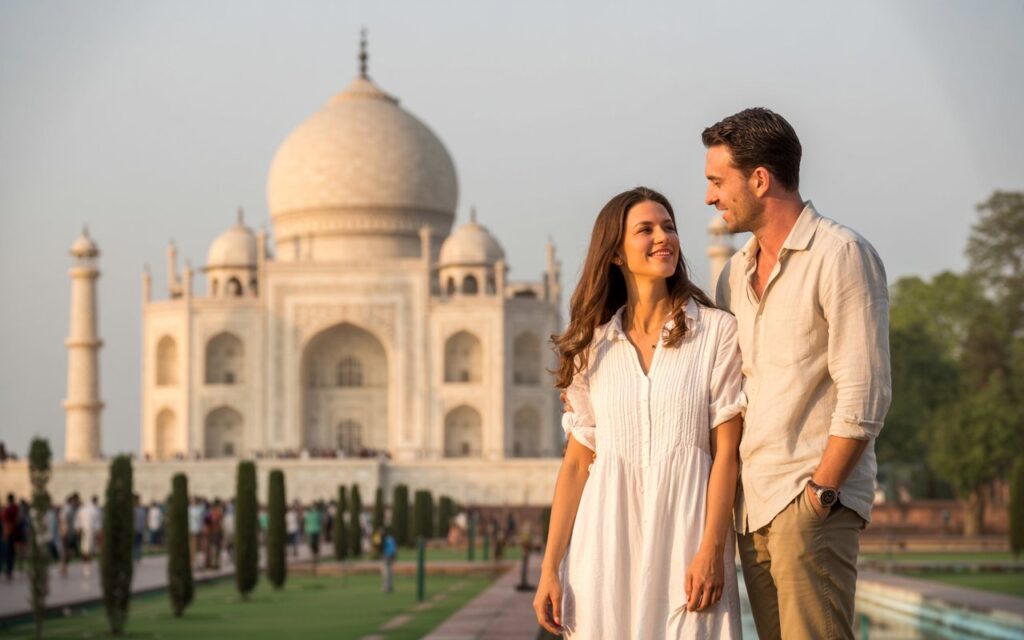
Combine Your Visit with Nearby Attractions
While the Taj Mahal is undoubtedly Agra’s crown jewel, the city offers much more than this single monument. Many travelers make the mistake of visiting only the Taj and leaving immediately, missing out on Agra’s rich history and cultural charm. The best way to experience everything is through well-planned Agra tour packages that include nearby attractions.
Agra Fort, just a few kilometers from the Taj Mahal, is a massive red sandstone fortress that once served as the main residence of Mughal emperors. Its impressive architecture and the view of the Taj Mahal from its balconies make it a must-visit site. Another gem is Mehtab Bagh, located across the Yamuna River. This tranquil garden offers a stunning symmetrical view of the Taj, especially during sunset. It’s a photographer’s paradise and often included in Agra Taj Mahal tour packages.
Don’t forget Fatehpur Sikri, a UNESCO World Heritage Site located about 40 km from Agra. Once the Mughal capital, it features beautifully preserved palaces, courtyards, and mosques. A day trip here can easily be added to most Taj Mahal tour packages, giving travelers a full taste of Mughal grandeur.
Here’s how you can structure your Agra tour package itinerary:
By combining these experiences, your Taj Mahal tour becomes an immersive journey through history, culture, and art—not just a quick photo opportunity.
Be Prepared for Security Checks
Security at the Taj Mahal is understandably tight, given its global significance and the large number of visitors it attracts daily. When you arrive for your Taj Mahal tour, expect a thorough security screening before entering the premises. Guards will inspect bags, and there are separate queues for men and women to streamline the process.
Visitors are allowed to carry only small bags containing essential items such as a phone, camera, water bottle, and wallet. Prohibited items include food, tobacco products, drones, tripods, lighters, and electronic gadgets other than cameras and phones. To make the process easier, pack light and bring only what’s necessary. Many Agra tour packages provide detailed lists of permitted and restricted items before the visit to save you from any hassle.
If you’re traveling with children or elderly members, plan extra time for the security check process. Guides in Taj Mahal tour packages often help manage the queue and keep your group organized. You can also store restricted items in lockers available near the entrance for a small fee.
Being prepared for these checks helps you enter smoothly and start your Taj Mahal tour without stress. Plus, you’ll appreciate the added layer of safety ensuring that everyone’s experience at this world wonder remains secure and enjoyable.
- Explore the Local Cuisine and Markets
A trip to Agra isn’t complete without savoring its delicious cuisine and exploring the city’s bustling bazaars. After your Taj Mahal tour, take some time to indulge your taste buds in the local specialties. The city is famous for Agra Petha, a sweet made from ash gourd that comes in countless flavors—rose, saffron, and even chocolate! You’ll find it sold in nearly every market near the monument.
For food lovers, Mughlai cuisine is another must-try. Influenced by Persian and Central Asian styles, Agra’s Mughlai dishes feature rich gravies, aromatic spices, and slow-cooked meats. Popular eateries like Pinch of Spice, Mama Chicken Mama Franky, and Esphahan (at The Oberoi Amarvilas) are perfect spots to experience these royal flavors. Many Agra Taj Mahal tour packages even include food tours for tourists wanting to explore authentic local dishes.
When it comes to shopping, Agra’s markets are treasure troves. Head to Sadar Bazaar and Kinari Bazaar for marble handicrafts, leather goods, and traditional jewelry. These markets reflect Agra’s artistic legacy, making them perfect for souvenirs to remember your Taj Mahal tour.
Exploring local culture through food and markets adds another layer of richness to your trip. You’ll return home with not just photos of the Taj Mahal, but flavors, smells, and memories that linger long after your journey ends.
Capture Memories, But Respect the Monument
The Taj Mahal is one of the most photographed sites in the world—and for good reason. Its flawless symmetry, reflective pools, and ethereal glow make it a photographer’s dream. However, while capturing its beauty is tempting, it’s equally important to respect the monument and follow photography rules.
Outside the main mausoleum, photography is allowed, and visitors can snap pictures from various angles. The most iconic shots are from the Princess Diana bench facing the reflecting pool and from the riverside garden, Mehtab Bagh. If your Taj Mahal tour package includes a professional photographer, they’ll guide you to the best photo spots and lighting conditions for that perfect frame.
Inside the mausoleum, however, photography and videography are strictly prohibited to preserve the monument’s sanctity. Flash photography, in particular, can damage the delicate marble and gemstones. Always follow these rules—being a responsible traveler ensures this timeless wonder can be admired by future generations.
Also, be mindful of crowds when taking selfies or photos. Blocking pathways or leaning against structures is discouraged. Many Agra tour packages emphasize responsible tourism, reminding visitors to respect local customs and the sacred atmosphere of the Taj.
Remember, while photographs freeze a moment, your memories of the Taj Mahal’s grandeur and emotion will stay etched in your heart forever.

